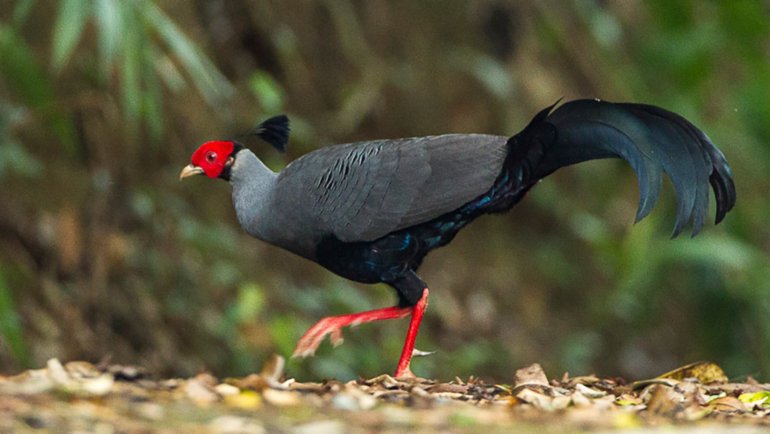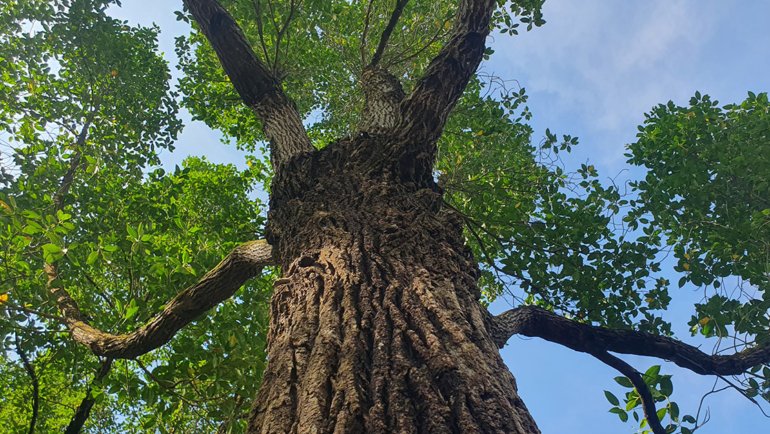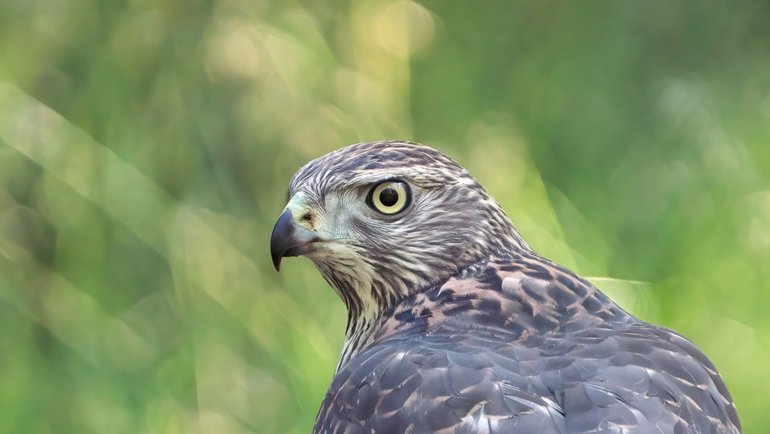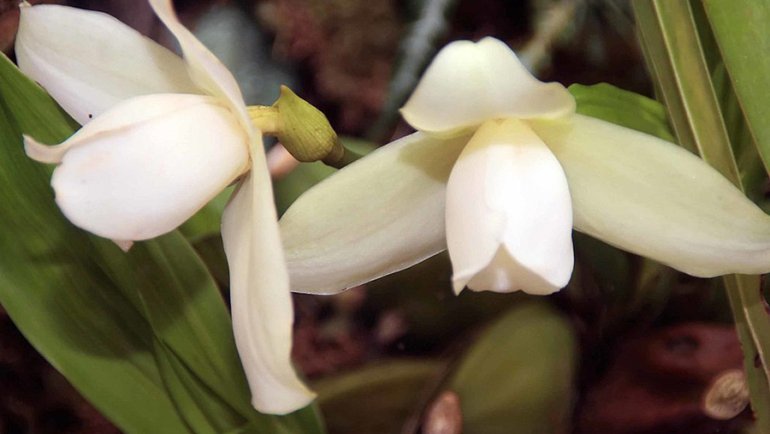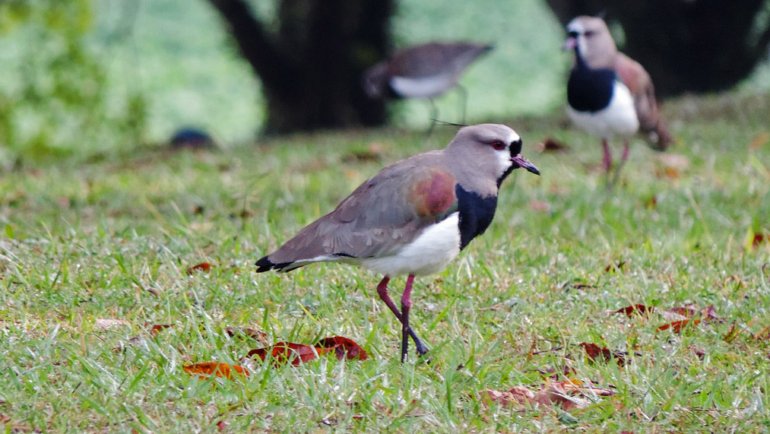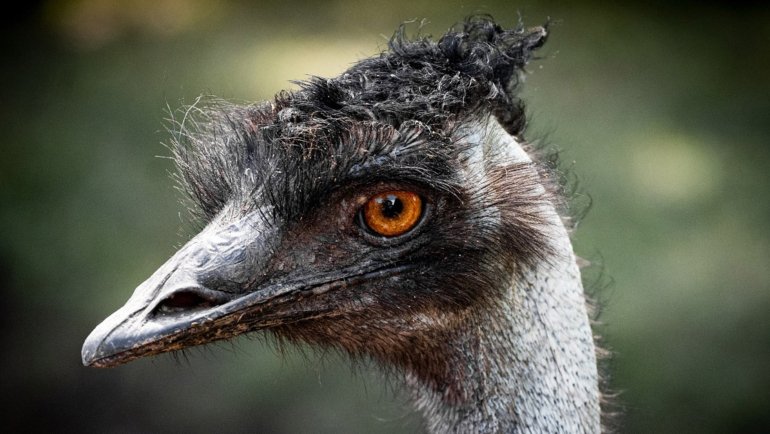Indonesia, a fabulous archipelago with an abundance of natural beauty and diversity, is home to some of the world’s most unique and fascinating wildlife, but one creature stands out as a true emblem of this nation’s rich biodiversity—the Komodo dragon.
Have you ever been captivated by the thought of dragons? While fire-breathing ones might be the stuff of legends, Indonesia hosts real-life dragons that roam its lands, gigantic and awe-inspiring!
Stick around as we delve into the world of the Komodo dragon, a creature that, with its size and predatory skills, appears to be plucked straight from a fantasy tale, and yet, is very much real. And did you know? These incredible creatures have a unique way of hunting that involves stealth, power, and a venomous bite!
Quick Info About The Komodo Dragon
| Scientific Name: | Varanus komodoensis |
| Average Size: | 8.5 ft (2.6 m) |
| Average Weight: | 154 lbs (70 kg) |
| Average Lifespan: | Up to 30 years |
| Geographical Range: | Islands of Komodo, Rincah, Flores, Gili Motang, and Padar, Indonesia |
| Habitat: | Dry, open grassland, savanna, and tropical forest at low elevations |
| Conservation Status: | Endangered (IUCN Red List) |
The 3 Faunal Emblems of Indonesia
In Indonesia’s rich biodiversity, three animals have been conferred special status as national emblems, representing the diverse fauna of this country and symbolizing the richness of its natural heritage. Each emblem serves to remind us of the incredible creatures that share this land with us, and of the need to respect and preserve the unique ecosystems they inhabit.
- Komodo Dragon (Varanus komodoensis): The national animal, also known as Satwa bangsa, this large, venomous reptile is a symbol of Indonesia’s unparalleled wildlife diversity and a representation of strength and resilience.
- Javan Hawk-Eagle (Nisaetus bartelsi): Designated as the rare animal and also the national bird or Satwa langka, this magnificent bird of prey is a symbol of freedom and grace, soaring high above the tropical forests of Java.
- Asian Arowana (Scleropages aureus and Scleropages legendrei): Known as Satwa pesona or the animal of charm, this beautiful, shimmering fish, with its elongated body and trailing fins, symbolizes prosperity and good fortune, reflecting the cultural beliefs and traditions of the Indonesian people.
Meet The Komodo Dragon, National Animal of Indonesia
The Komodo dragon, the colossal lizard that calls Indonesia its home, is truly a marvel of nature. Characterized by its robust and muscular physique, this reptile flaunts a rugged, durable hide adorned with armored scales, and its sharp, serrated teeth can cut through most materials with ease. Males, typically larger and more dominant, can grow up to 10 feet (3 meters), creating an imposing presence in their environment.
With its fierce appearance, you might be wondering, what role does the Komodo dragon play in its ecosystem? Well, it’s the apex predator, sitting at the top of its food chain with no natural predators once fully grown. Its diet is versatile, feeding on anything from birds to large mammals like deer, and even its own kind!
Yes, Komodo dragons are known for their cannibalistic tendencies, especially towards the younger and more vulnerable of their species. Their hunting strategy is a combination of stealth, power, and venom, leaving little escape for their prey. This reptile plays a crucial role in maintaining ecological balance by controlling the population of the animals it preys upon.
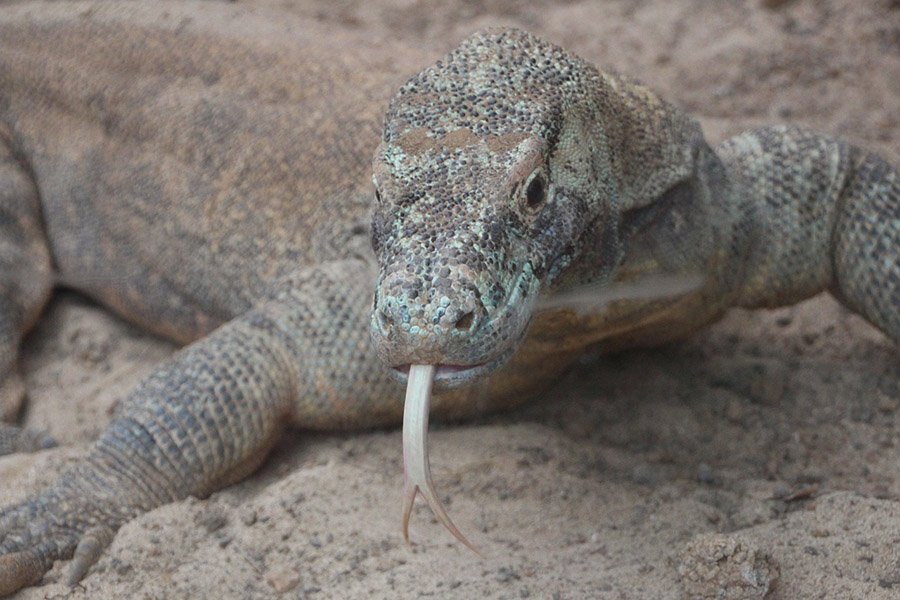
Where Does The Komodo Dragon Live?
The Komodo dragon favors the harsh, rugged terrains of the Lesser Sunda Islands in Indonesia, specifically on the islands of Komodo, Rinca, Flores, Gili Motang, and Padar. Thus, the Komodo dragon is endemic to Indonesia, it is not found anywhere else.
The climate here is tropical yet arid, with savannas that provide ample open spaces for hunting. These dragons are well-adapted to their environment, being excellent swimmers, which allows them to move between islands in search of food.
Though the islands each have their unique characteristics, they share common environmental features conducive to the lifestyle of the Komodo dragon, namely, the availability of prey and the presence of suitable nesting sites. These conditions have enabled the Komodo dragon to survive and thrive on these islands, becoming a living testament to the evolutionary history of the reptiles of the region.
Why and When Did The Komodo Dragon Become The National Animal of Indonesia?
The iconic Komodo dragon is not just a symbol of the rich biodiversity of Indonesia but also a potent emblem of power, resilience, and uniqueness, representing the nation’s intrinsic values and cultural identity.
Indonesia, being a country rich in traditions and diverse in its cultures, sees the Komodo dragon as a symbol of strength and a guardian of the country’s vast and varied ecosystems.
The decision to make the Komodo dragon the national animal wasn’t just due to its imposing stature and unique presence but also due to its exclusivity to the Indonesian archipelago. This giant lizard exemplifies the distinctive and varied wildlife indigenous to the nation and underscores Indonesia’s role in global biodiversity.
However, the distinction is not without its share of debates and controversies, primarily revolving around conservation efforts and economic activities.
The unique status of the Komodo dragon has led to intensified conservation initiatives, but these often clash with local economic activities, notably tourism, creating a delicate balance to maintain between preservation and progress.

Where is The Komodo Dragon Featured in Indonesia?
While the Komodo dragon is not festooned on the national flag or currency, its majestic and formidable image is revered and is prominently featured in various forms across the country. It is a celebrated symbol in cultural artifacts, tourism promotions, and educational materials, projecting the image of Indonesia as a land of diverse and unique wildlife.
The Komodo dragon also makes regular appearances in local legends and folklore, portrayed as a guardian of the natural world, a symbol of protection and strength, reinforcing its significant place in the cultural psyche of the Indonesian people.
Its portrayal in multiple facets of Indonesian life symbolizes the intertwining of cultural heritage and natural wealth, creating a unique narrative that blends tradition with environmental consciousness. And, it’s this amalgamation that reflects the essence of Indonesia, a nation rich in both cultural heritage and biodiversity.
Names of The Komodo Dragon
Known to the scientific world as Varanus komodoensis, the Komodo dragon is called ‘Biawak Raksasa Komodo’ in Indonesian.
This giant lizard is also sometimes colloquially referred to as ‘Ora’ by locals, which means ‘land crocodile’ in the local dialect of Manggarai. Each name mirrors a facet of its personality or its appearance, painting a vivid picture of its attributes, behavior, and habitat.
Is The Komodo Dragon Endangered?
Yes, the Komodo dragon is classified as ‘Endangered’ on the International Union for Conservation of Nature (IUCN) Red List, due to the rapid degradation of its natural habitat, human activities, and climatic changes. The populations are facing severe threats from habitat destruction, mainly due to human encroachment and increased tourism activities.
Conservation efforts are indeed in place, with the Komodo National Park serving as a sanctuary for these majestic creatures. Here, they are protected and can thrive in their natural habitat, away from external threats. Innovative conservation strategies, including habitat restoration and anti-poaching laws, are being enforced rigorously to ensure the survival of this unique species.
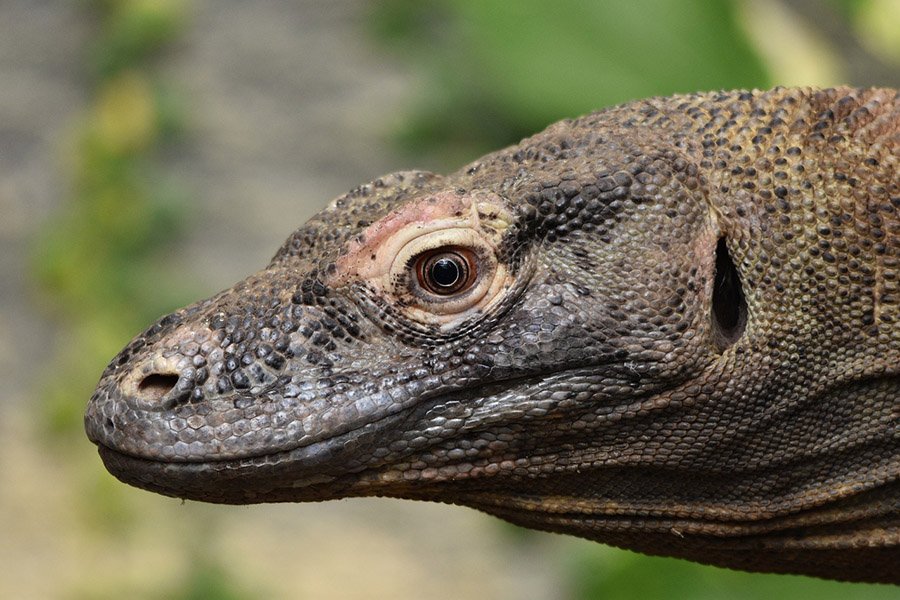
Interesting Facts About The Komodo Dragon
- Venomous Saliva: Contrary to earlier beliefs, Komodo dragons are venomous. Their saliva contains a mix of toxic proteins capable of inducing shock and preventing blood clotting in their prey.
- Impressive Swimmers: They are adept swimmers and can cover distances up to 4 kilometers (2.5 miles) in the sea.
- Solitary Creatures: Komodo dragons are largely solitary, coming together mainly to breed and eat.
- Cannibalistic Nature: Juveniles spend much of their early life in trees to avoid becoming a meal for the adult Komodo dragons, who are known to be cannibalistic.
- Exceptional Sense of Smell: They have an extraordinary sense of smell and can detect carrion up to 9.5 kilometers (6 miles) away.
- Speedy Runners: Surprisingly, they can run up to 20 kilometers per hour (12.4 miles per hour) in short bursts when hunting.
- Ecosystem Role: Komodo dragons play a crucial role in maintaining ecological balance as they are top predators, helping control the population of other animals they prey on.
Other Beautiful Animals Native To Indonesia
- Sumatran Orangutan (Pongo abelii): A critically endangered species, this orangutan is exclusive to the north of the Indonesian island of Sumatra.
- Javan Rhinoceros (Rhinoceros sondaicus): One of the most endangered large mammals in the world, it is found only in the western tip of the Indonesian island of Java.
- Babirusa (Babyrousa babyrussa): A peculiar and endangered pig species endemic to the Indonesian islands, recognized by its distinctive upward-curving tusks.
- Maleo (Macrocephalon maleo): This unique bird buries its eggs in the volcanic sands of Sulawesi island.
- Cendrawasih (Paradisaea species): Also known as the bird-of-paradise, this bird is renowned for its vibrant plumage and elaborate courtship dances.
Frequently Asked Questions
Can Komodo dragons be found outside Indonesia?
No, Komodo dragons are endemic to Indonesia, primarily found on the islands of Komodo, Rinca, Flores, Gili Motang, and Padar.
Why was the Komodo dragon chosen as the national animal of Indonesia?
The Komodo dragon symbolizes the rich biodiversity of Indonesia and its uniqueness and rarity make it a symbol of national pride and conservation importance.
Is it safe to visit Komodo Island?
Yes, it is generally safe to visit Komodo Island with guided tours, as the guides are experienced in interacting with and managing encounters with the dragons.
How does Indonesia protect the Komodo dragon and its habitat?
Indonesia has established the Komodo National Park to protect the Komodo dragons and their habitat, enforcing strict anti-poaching laws and regulating tourism to minimize impact on their environment.
Are there any initiatives to preserve the habitats of other endangered species in Indonesia?
Yes, there are several initiatives and conservation programs in place aimed at preserving the habitats of endangered species like the Sumatran Orangutan and the Javan Rhinoceros, including habitat restoration and anti-poaching efforts.
What is the significance of the other faunal emblems of Indonesia?
The Javan hawk-eagle represents the country’s avian diversity and the urgency of avian conservation, while the Asian Arowana symbolizes cultural importance, aquatic diversity, and the richness of Indonesia’s freshwater bodies.
